|
|
 |
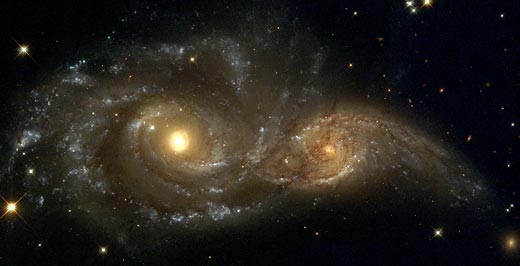 |
|
|
| Two spiral galaxies, the larger NGC 2207 on the left, and the smaller one, IC 2163 on the right, fling out stars and gas into long streamers extending 100,000 light-years toward the right-hand edge of the picture. Strong gravitational forces from NGC 2207 have distorted the original shape of its smaller dance partner. When the dance ends, billions of years from now, the two galaxies will become one.
|
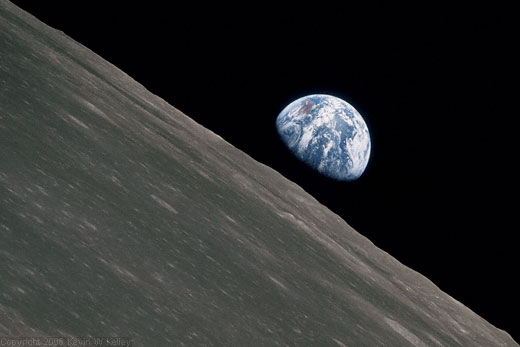 |
|
|
| In this series, which was taken from Apollo 11 while in lunar orbit, 20 July 1969, a cloud-covered Earth appears to rise above the surface of the moon. The entire continent of Australia is visible, as is the western Pacific Ocean, eastern Asia, and the Arctic.
|
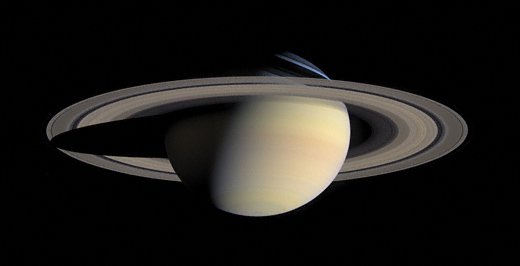 |
|
|
| This true-color simulated view of Jupiter is composed of 4 images taken by NASA's Cassini spacecraft on December 7, 2000. To illustrate what Jupiter would have looked like if the cameras had a field-of-view large enough to capture the entire planet, the cylindrical map was projected onto a globe. The resolution is about 144 kilometers (89 miles) per pixel. Jupiter's moon Europa is casting the shadow on the planet. |
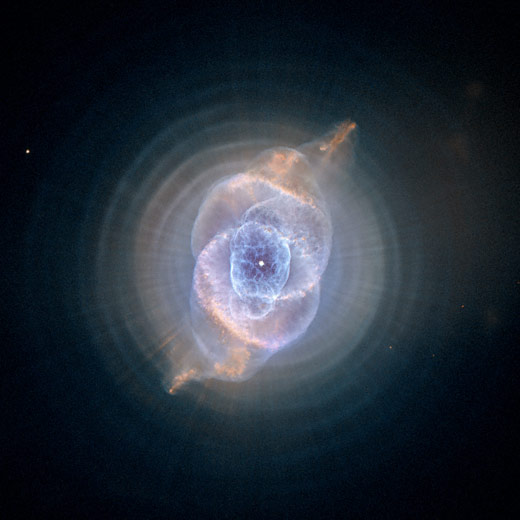 |
|
|
| The so-called Cat's Eye Nebula looks like the penetrating eye of the disembodied sorcerer Sauron from the film adaptation of "The Lord of the Rings." The nebula, formally cataloged NGC 6543, is every bit as inscrutable as the J.R.R. Tolkien phantom character. Though the Cat's Eye Nebula was one of the first planetary nebulae to be discovered, it is one of the most complex such nebulae seen in space.
|
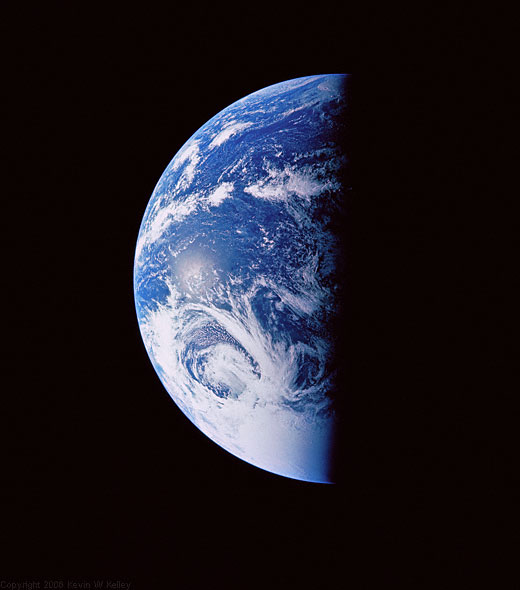 |
|
|
| A large storm in the North Pacific Ocean south of Alaska. The predominantly white area is the Kamchatka Peninsula of Siberia. Japan appears near the horizon.
|
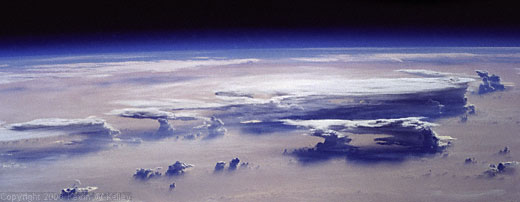 |
|
|
| Thunderstorms over the tropical ocean and along the far horizon have their tops blow off.
|
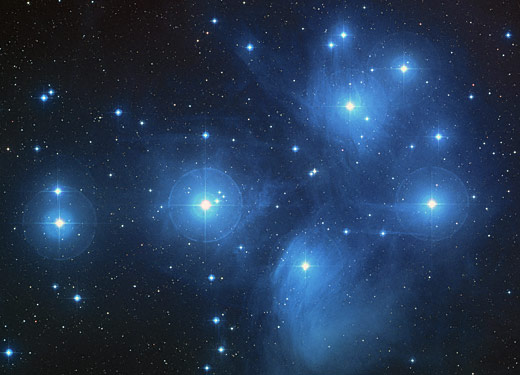 |
|
|
| Hubble Space Telescope's fine guidance sensors have refined the distance to the popular open star cluster Pleiades, or Seven Sisters to about 440 light years. Some 1,000 stars comprise the Pleiades cluster, located in the constellation Taurus. Slight changes in the apparent positions of three stars within the cluster when viewed from different sides of Earth's orbit were also recently discovered.
|
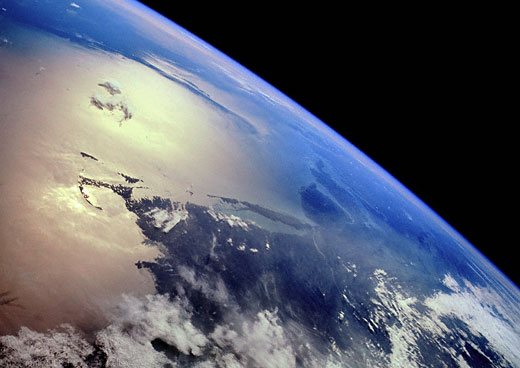 |
|
|
| Spectacular oblique view down east coast of United States from Maine to the Chesapeake Bay and further south. Cape Cod is accentuated and highlighted in sunlight center of image. 1994. Taken from 164 nautical miles up.
|
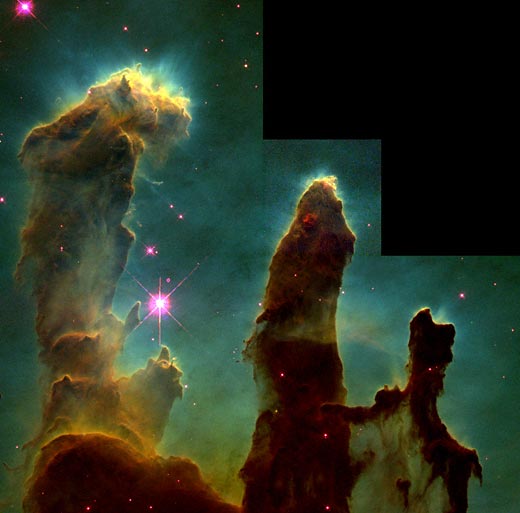 |
|
|
| Columns of cool, interstellar hydrogen gas and dust serve as incubators for new stars in the Eagle Nebula (M16), a nearby star-forming region 6,500 light-years away in the constellation Serpens. Ultraviolet light is also responsible for illuminating the convoluted surfaces of the columns and the ghostly streamers of gas boiling away from their surfaces that produces the dramatic visual effects that highlight the three-dimensional nature of the clouds.
|
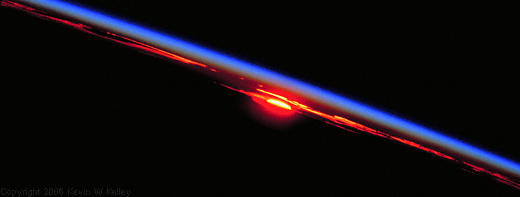 |
|
|
| Photo taken by Cosmonauts V. Kovalyonok and Ivanchenkov on board the orbital space complex Salyut 6 - Soyuz 29 - Soyuz 31, September 1978. Fotokhronika TASS.
|
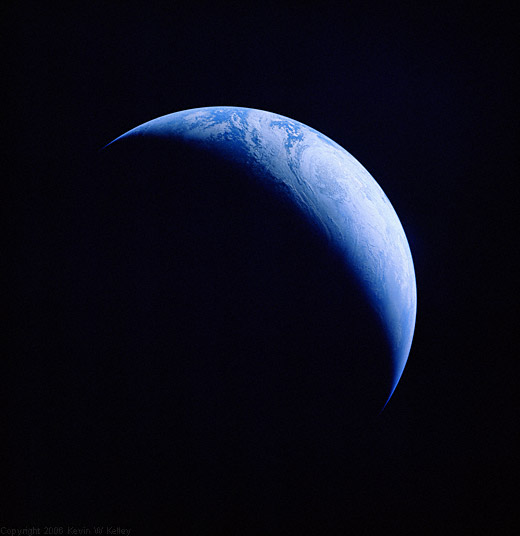 |
|
|
| In 1969, The Apollo 4 unmanned flight made a great ellipse around the Earth as a test of the trans-lunar motors and of the high speed entry required of a manned flight returning from the moon. A 70 mm camera was programmed to look out a window toward the Earth and take a series of such photographs from "high apogee." This is the result!
|
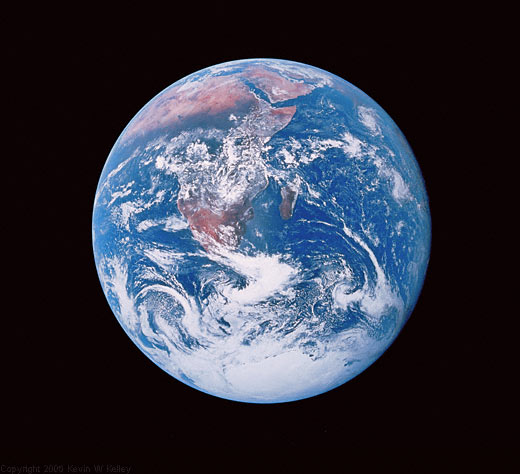 |
|
|
| Earth seen from 23,000 miles away
|
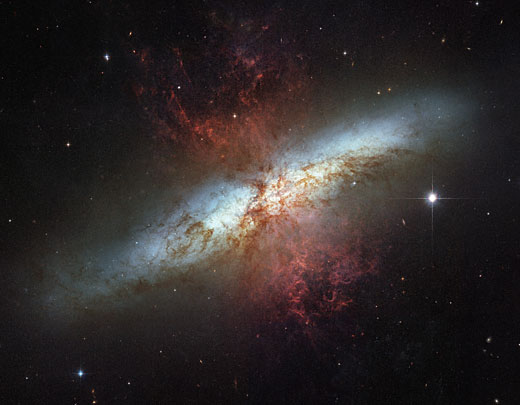 |
|
|
| Image of the magnificent starburst galaxy, Messier 82 (M82). This mosaic image is the sharpest wide-angle view ever obtained of M82. The galaxy is remarkable for its bright blue disk, webs of shredded clouds, and fiery-looking plumes of glowing hydrogen blasting out of its central regions. The Hubble observation was made in March 2006. Astronomers assembled this 6-image composite mosaic by combining exposures taken with four colored filters that capture starlight from visible and infrared wavelengths as well as the light from the glowing hydrogen filaments.
|
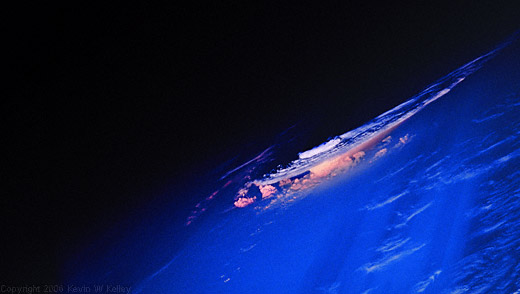 |
|
|
| As the earth turns again into the night, a huge thunderstorm along the Earth's terminator (the demarcation betwewen day and night the edge of sunset/sunrise) - races spaceward - faster than the lands speeds downard and away from the limbs shaddow - "making the evening shaddows run" as it lights, as it wets and as it cools the twilight.
|
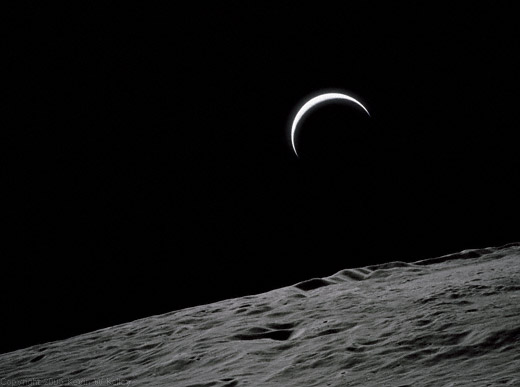 |
|
|
| A crescent Earth rises over the moon, as seen by astronauts in lunar orbit. The exposure was set for the lunar surface and thus the Earth appears overexposed.
|
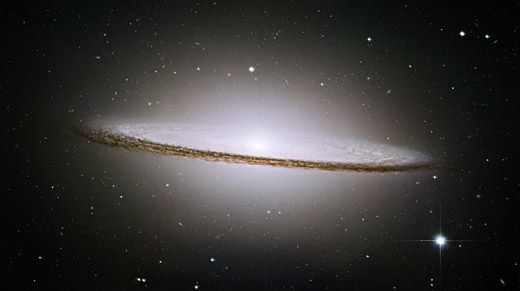 |
|
|
| The Sombrero Galaxy reveals a swarm of glowing stars in a pancake-shaped disk, nearly one-fifth the diameter of the full moon. The galaxy, an edge-on spiral galaxy 28 million light years toward the constellation Virgo, is one of the better known objects in the evening sky. Light from this spiral galaxy emanates from billions of faint stars that form a vast bulge around its relatively tiny nucleus.
|
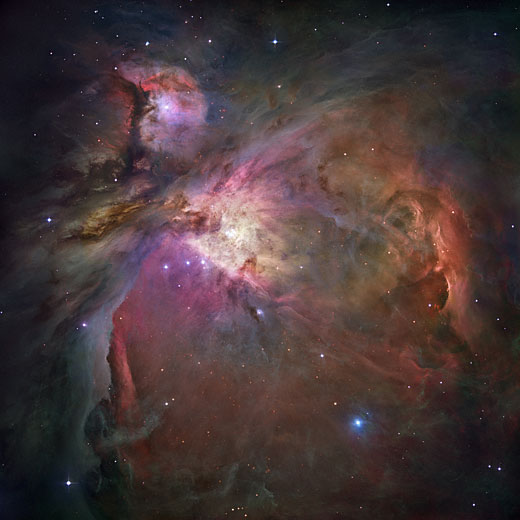 |
|
|
| More than 3,000 stars of various sizes appear in this image many of which have never before been seen in visible light. The Orion Nebula is 1,500 light-years away, the nearest star-forming region to Earth. Four bright stars called the Trapezium can be found in the central region of the nebula. Ultraviolet light unleashed by these stars is carving a cavity in the nebula and disrupting the growth of hundreds of smaller stars.
|
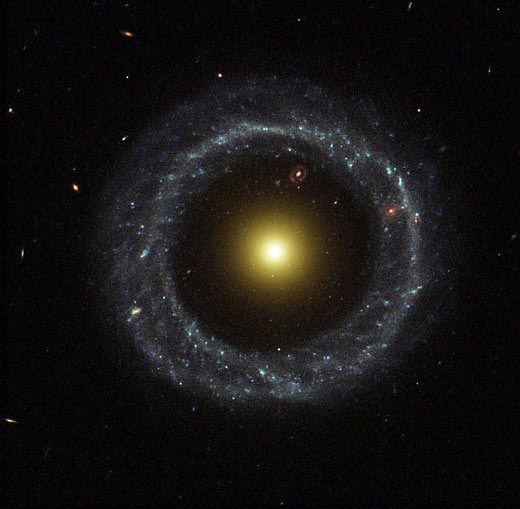 |
|
|
| Hoag's Object is a nearly perfect ring of hot, blue stars pinwheels formed about the yellow nucleus of an unusual galaxy. The entire galaxy is about 120,000 light-years wide, which is slightly larger than our Milky Way. The blue ring, is dominated by clusters of young, massive stars, in sharp contrast to the yellow nucleus of mostly older stars.
|
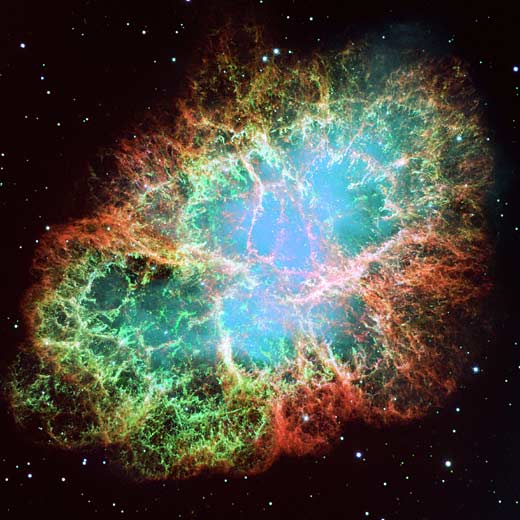 |
|
|
| A rapidly spinning neutron star is the remnant of the star that formed the Crab Nebula and is the dynamo that causes its bluish interior glow. The orange filaments are the tattered remains of the star and consist mostly of hydrogen. This mosaic image of twenty-four individual Wide Field and Planetary Camera 2 exposures is one of the largest ever taken by NASA's Hubble Space Telescope.
|
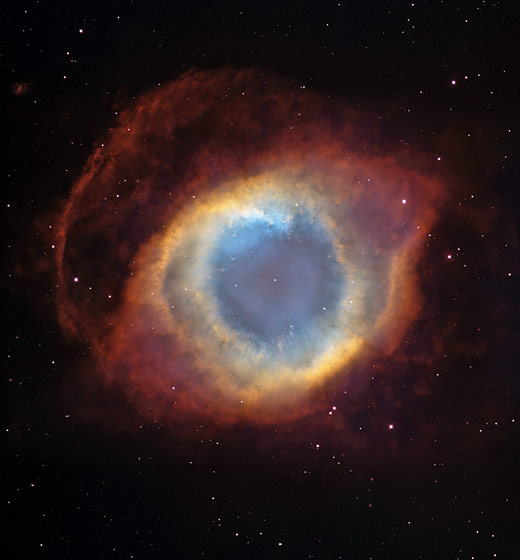 |
|
|
| The Helix Nebula, one of the closest planetary nebulae, is located some 650 lights years away toward the constellation Aquarius. This nebula spans more than 1/4 degree of the sky, or more than 1/2 of the diameter of the full Moon. Blue light results from ionized oxygen, and red light results from ionized hydrogen and nitrogen.
|
|
|
|














